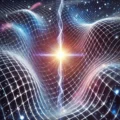“Father” of the Big Bang Theory
Introduction
Msgr. Georges Lemaître (1894–1966) was a Belgian priest, astronomer, and professor of physics at the Catholic University of Leuven. He proposed the theory of the expansion of the universe, often misattributed to Edwin Hubble. Lemaître was the first to derive what is now known as Hubble’s law and made the first estimation of what is now called the Hubble constant, which he published in 1927, two years before Hubble’s article.
Early Life and Education
Lemaître was born in 1894 in Charleroi, Belgium. As a young man, he was attracted to both science and theology, but World War I interrupted his studies (he served as an artillery officer and witnessed the first poison gas attack in history). After the war, Lemaître studied theoretical physics at the Catholic University of Leuven. In 1923, he was ordained as an abbé.
The following year, he pursued his scientific studies with the English astronomer Arthur Eddington, who regarded him as “a very brilliant student, wonderfully quick and clear-sighted, and of great mathematical ability.” Lemaître then went to America, where he visited most of the major centers of astronomical research. Later, he received his Ph.D. in physics from the Massachusetts Institute of Technology.
In 1925, at age 31, Lemaître accepted a professorship at the Catholic University of Louvain, near Brussels, a position he retained through World War II.
Contributions
In 1927, Lemaître published a paper in Belgium that provided a compelling solution to the equations of General Relativity for an expanding universe. His solution had already been derived without his knowledge by the Russian Alexander Friedmann in 1922. However, Friedmann was primarily interested in the mathematics of idealized solutions and did not pursue the possibility that one of them might describe the physical universe.
Lemaître explored the logical consequences of an expanding universe and proposed that it must have originated at a finite point in time. If the universe is expanding, he reasoned, it was smaller in the past, and extrapolation back in time should lead to an epoch when all the matter in the universe was packed together in an extremely dense state. Appealing to the new quantum theory of matter, Lemaître argued that the physical universe was initially a single particle—the “primeval atom,” as he called it—which disintegrated in an explosion, giving rise to space and time and the expansion of the universe that continues to this day. This idea marked the birth of what we now know as Big Bang cosmology.
Lemaître also proposed what became known as the Big Bang theory of the origin of the Universe, which he called his “hypothesis of the primeval atom” or the “Cosmic Egg.” He based this on early redshift observations by Vesto Slipher, who first noted that an expanding universe might be traced back in time to an originating single point which he called the “primeval atom.”
Based on Lemaître’s predictions, it is now thought that this event happened approximately 13.8 billion years ago. Edwin Hubble confirmed through redshifts in 1929 that the galaxies “are indeed” drifting apart. This provided key evidence to support the theory of an expanding universe. Additionally, the existence of Cosmic Microwave Background (CMB) energy is attributed to this event.
Subsequently, scientists have built on Lemaître’s idea of cosmic expansion, with the Big Bang theory becoming the prevailing cosmological model for the universe from the earliest known periods through its subsequent large-scale evolution. Modern measurements place this moment at approximately 13.8 billion years ago, which is thus considered the age of the universe. After the initial expansion, the universe cooled sufficiently to allow the formation of subatomic particles, and later simple atoms. Giant clouds of these primordial elements later coalesced through gravity to form stars and galaxies.
Conjecture
If the known laws of physics are extrapolated beyond where they are valid, a singularity arises.
If gravity is at the speed of light, then the size of the universe is limited by the time/distance it takes charges to collect before the Big Bang. The collection volume for the origin is limited by the time it takes for particles to come together at the center of gravity. This means that its size is not infinite. This raises the possibility that the Big Bang was a micro-bang, one of many located randomly throughout the universe, reflecting the idea that nature abhors a vacuum. This means not all matter or energy is collected in one Big Bang episode, leading to the possibility that energy and mass/matter may have existed outside the range of a “Big Bang.” This in turn raises the possibility of a trigger that causes an event.
Furthermore, it is difficult to conceive of the universe as being only 13.8 billion years old, given that every improvement in measurement sensitivity and bandwidth reveals an even greater expansion.
More recently, measurements of the redshifts of supernovae indicate that the expansion of the universe appears to be accelerating. Some have noted that this theory was put forth by a priest, perhaps to align science with religion. Lemaître later recalled Einstein saying to him, “Vos calculs sont corrects, mais votre physique est abominable” (“Your calculations are correct, but your physics is atrocious”).
Legacy
Lemaître received the Francqui Prize (1934) and the Eddington Medal (1953).
